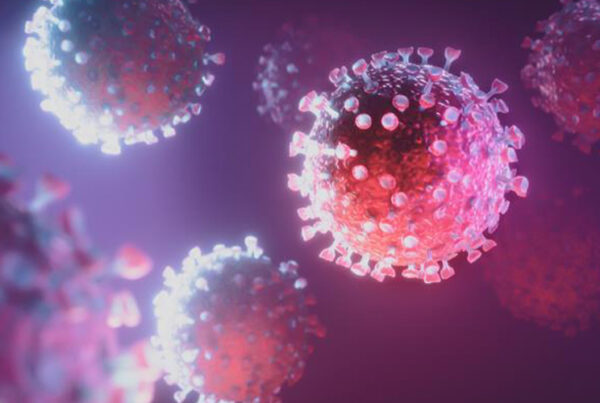
Introduction
Leukemia begins when the genetic material in the bone marrow cell starts dividing uncontrollably. This leads to abnormal development and impaired cell functions. Diagnosing leukemia early is crucial for effective treatment and better outcomes. This blog explores the step-by-step process of how is leukemia diagnosed, offering a clear and comprehensive guide for those seeking answers.
What is Leukemia?
Leukemia is not a single disease but a group of blood cancers that originate in the bone marrow, where blood cells are produced. It disrupts the normal production of white blood cells, red blood cells, and platelets, leading to various health issues.
There are different types of leukemia, categorized based on their progression (acute or chronic) and the affected cell type (lymphocytic or myeloid). For instance, Chronic Myelogenous Leukemia Clinical Trials often focus on innovative treatments to improve outcomes for patients with this specific type of leukemia. Symptoms like fatigue, frequent infections, unexplained weight loss, and bruising may indicate leukemia. However, these symptoms can overlap with other conditions, making proper diagnosis essential.
How Does Leukemia Develop?
Leukemia starts in the bone marrow, which is responsible for blood cell production. Bone marrows are soft and situated in the inner cavity of your bones.
When blood cells develop normally, they might become either of these once mature:
- Myeloid cells: They develop into red blood cells, platelets, and even some white cells.
- Lymphoid cells: They can mature into some categories of white cells.
On the other hand, one of the growing blood cells starts to grow uncontrollably if you have leukemia. These abnormal cells, known as leukemia cells, start to occupy the interior of your bone marrow. They displace the cells attempting to differentiate into healthy platelets, white blood cells, and red blood cells.
Read More: Leukemia vs Lymphoma: Understanding the Differences, Causes, and Treatments
How is Leukemia Diagnosed?
Early diagnosis is the key to early prevention. Therefore, early blood work helps diagnose leukemia at the right time. Blood work is the best way to inform your healthcare providers about acute or chronic forms of leukemia. Moreover, the providers may order a workup if any symptoms persist.
Initial Steps in Diagnosing Leukemia
As said, an early diagnosis is the key to early prevention and treatment, initial diagnosis involves multiple steps.
Medical History and Physical Examination
The diagnostic journey begins with a thorough review of your medical history. Doctors ask about symptoms, family history, and any exposure to risk factors like radiation or certain chemicals. A physical examination follows, focusing on swollen lymph nodes, an enlarged spleen, or unusual bruising.
Laboratory Blood Tests
Blood tests play a main role in detecting abnormalities.
Complete Blood Count (CBC): This test measures the number and type of blood cells in your bloodstream. An unusually high or low white blood cell count may signal leukemia.
Peripheral Blood Smear: By examining blood cells under a microscope, doctors look for irregularities that could indicate cancerous changes.
Advanced Diagnostic Procedures- How is Leukemia Diagnosed?
When initial level tests suggest any presence of leukemia, advanced-level diagnostic procedures help confirm it.
Bone Marrow Tests
A bone marrow biopsy or aspiration involves extracting a small sample of marrow, usually from the hip bone. This test provides vital information about the presence and type of leukemia cells in the bone marrow.
Imaging Tests
While leukemia primarily affects blood and bone marrow, imaging tests like CT scans or MRIs help assess whether it has spread to other organs. These tests also aid in staging the disease.
Cytogenetic and Molecular Testing
Leukemia is often linked to specific genetic mutations or abnormalities, such as the Philadelphia Chromosome Symptoms, a hallmark of chronic myelogenous leukemia. Cytogenetic testing identifies these genetic markers. Thus, it enables precise treatment plans.
Flow Cytometry and Immunophenotyping
These advanced techniques analyze the markers on cell surfaces, helping doctors classify leukemia into subtypes. This is necessary for determining the most effective treatment strategy.
Lumbar Puncture (Spinal Tap)
In some cases, doctors test spinal fluid to check if leukemia has spread to the central nervous system. Although not always required, this test provides additional insight into disease progression.
Importance of Early and Accurate Diagnosis
Early and accurate diagnosis can make a major difference in leukemia treatment. It allows healthcare providers to customize therapies, whether that involves chemotherapy, targeted drugs, or bone marrow transplants. For example, patients with Chronic Myeloproliferative Disease may require specialized treatment plans that differ from those with other leukemia types.
Leukemia treatment has become increasingly personalized thanks to advancements in what is Oncology research. This field has introduced therapies that target specific genetic mutations, improving patient outcomes while minimizing side effects.
Challenges in Diagnosing Leukemia
Like any other hurdle in oncology (study of cancer), diagnosing leukemia also faces multiple challenges. Primarily, diagnosing leukemia can be challenging due to its symptomatic resemblance with other conditions. Fatigue or frequent infections, for instance, could result from anemia or a viral illness rather than leukemia. Rare subtypes may require specialized testing, underscoring the importance of consulting experienced medical centers.
Moreover, clinical trial recruitment has expanded access to cutting-edge diagnostic tools and treatments. Participating in trials can offer patients earlier access to innovative therapies and contribute to the advancement of leukemia research.
What to Expect During the Diagnostic Process?
The leukemia diagnostic process may seem overwhelming but understanding what to expect can ease some anxiety. Here’s how you can prepare:
Be Open About Symptoms: Share detailed information with your doctor about any unusual changes in your health.
Prepare for Tests: Tests like bone marrow biopsies or spinal taps may feel intimidating, but your healthcare team will guide you through the process.
Seek Support: Lean on friends, family, or support groups for emotional support during this time.
Waiting for a diagnosis can be emotionally taxing. However, staying informed and proactive can help you navigate this challenging period with confidence.
Conclusion
To conclude, leukemia is a complex condition, but advancements in diagnostic tools and research have made early detection more effective than ever. Knowing the steps involved in how leukemia is diagnosed, from initial blood tests to advanced genetic testing—empowers patients and families to make informed decisions.
Additionally, early detection of leukemia helps healthcare providers to customize treatment plans. This helps improve outcomes and increase the quality of life. If you or your loved ones suffer from this condition, enrolling in a clinical trial is a reliable option. NHO Revive is conducting leukemia clinical trials for multiple cancerous conditions. With advanced technology and a team of professionals, your clinical trial journey is in safe hands. So, contact us today.







